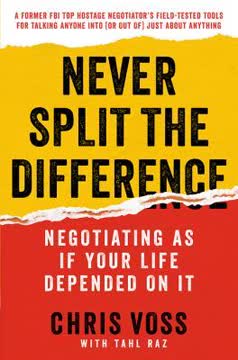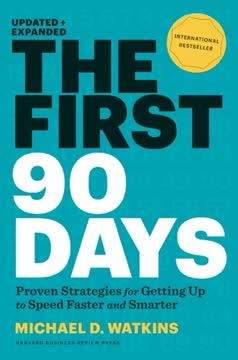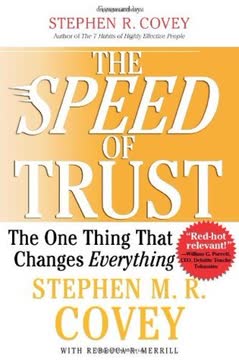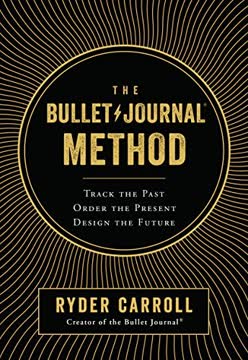Key Takeaways
1. Discover Your Authentic Self to Build Your Personal Brand
Personal branding is about expressing your authentic self by allowing you to be the person you're meant to be.
Self-awareness is key. To build an authentic personal brand, start by examining your needs, values, passions, strengths, and unique characteristics. Use tools like Maslow's Hierarchy of Needs, personality assessments, and feedback from others to gain a comprehensive understanding of yourself.
Embrace your uniqueness. Your "freak factor" - the qualities that make you different - can be your greatest asset. Instead of hiding these traits, leverage them to stand out in your field. Consider how your life experiences, skills, and personality traits combine to create a unique value proposition.
- Identify your core values and motivations
- Analyze your strengths and weaknesses (SWOT analysis)
- Seek feedback from others (360° assessments)
- Embrace your "freak factor" as a differentiator
2. Identify Your Target Audience and Unique Value Proposition
Personal branding is not about being famous; it's about being selectively famous.
Define your niche. To effectively brand yourself, you must identify who needs to know about you and what you have to offer. This could be potential employers, clients, or a specific industry segment. Research your target audience to understand their needs, preferences, and pain points.
Differentiate yourself. Once you understand your audience, determine how you can uniquely serve them. This involves analyzing your competitors and identifying gaps in the market that you can fill. Your unique value proposition should clearly communicate what sets you apart and why your target audience should choose you.
- Conduct market research on your target audience
- Analyze competitors in your field
- Identify your unique selling points
- Develop a positioning statement
3. Craft a Compelling Personal Brand Statement and Story
Your story becomes your personal brand, and you need to think about which stories you tell to others to illustrate who you are.
Develop your brand statement. Your personal brand statement should succinctly express who you are, what you do, and what makes you unique. It should be clear, memorable, and aligned with your target audience's needs.
Tell your story. Storytelling is a powerful tool for connecting with your audience emotionally. Craft a narrative that highlights your journey, challenges overcome, and unique perspective. This story should reinforce your brand attributes and demonstrate your value.
- Write a concise personal brand statement
- Identify key moments in your personal/professional journey
- Practice your "elevator pitch"
- Use storytelling techniques to engage your audience
4. Communicate Your Brand Consistently Across All Platforms
Clarity, Consistency, and Constancy are the three Cs of effective personal branding.
Maintain consistency. Your brand message should be clear and consistent across all communication channels, including your resume, social media profiles, personal website, and in-person interactions. This consistency builds trust and reinforces your brand identity.
Leverage multiple platforms. While maintaining consistency, tailor your message to each platform's strengths. For example, use LinkedIn for professional networking, Twitter for sharing industry insights, and a personal blog for in-depth content.
- Develop a content strategy for each platform
- Use consistent visual elements (colors, fonts, images)
- Align your online and offline presence
- Regularly audit your brand communications for consistency
5. Develop a Strong Visual Identity and Professional Image
Everything you wear conveys information about you.
Create a visual brand. Your visual identity includes your logo, color palette, and overall aesthetic. Choose elements that reflect your brand personality and resonate with your target audience. Apply this visual identity consistently across all materials, from business cards to your website.
Dress for success. Your appearance is a crucial part of your personal brand. Dress in a way that aligns with your brand attributes and is appropriate for your industry. Pay attention to grooming, body language, and other non-verbal cues that contribute to your overall image.
- Develop a personal logo and color scheme
- Create branded materials (business cards, website, etc.)
- Invest in a professional wardrobe that aligns with your brand
- Practice confident body language and presentation skills
6. Network Strategically to Expand Your Brand's Reach
Growing a strong network is smart brand management.
Build meaningful connections. Networking is about quality, not just quantity. Focus on building genuine relationships with people in your industry and target audience. Attend relevant events, join professional associations, and engage in online communities.
Provide value. Effective networking is a two-way street. Look for opportunities to help others and share your expertise. This approach builds goodwill and establishes you as a valuable resource in your network.
- Identify key networking opportunities in your industry
- Develop a system for maintaining relationships
- Offer help and expertise to others in your network
- Use social media to expand your reach and engage with your audience
7. Evolve Your Brand Throughout Your Career Journey
Your personal brand is not static.
Embrace lifelong learning. To maintain a relevant and strong personal brand, continuously update your skills and knowledge. Stay informed about industry trends and be willing to adapt your brand as your career evolves.
Reassess regularly. Periodically review and update your personal brand to ensure it aligns with your current goals and market demands. This may involve refining your target audience, updating your skills, or pivoting to a new niche.
- Set regular intervals for brand review (e.g., annually)
- Stay informed about industry trends and developments
- Seek ongoing education and skill development
- Be open to pivoting or expanding your brand as needed
8. Apply Personal Branding in the Workplace for Success
Having a strong personal brand will serve you well in the gig economy.
Be visible. In today's workplace, it's important to stand out positively. Look for opportunities to showcase your skills and contribute to high-profile projects. Share your expertise through presentations, team collaborations, or internal communications.
Build internal relationships. Apply your networking skills within your organization. Build strong relationships with colleagues, superiors, and other departments. Be known for your reliability, expertise, and positive attitude.
- Volunteer for cross-functional projects
- Share your expertise through internal channels
- Seek mentorship opportunities (both as mentor and mentee)
- Align your personal brand with your company's culture while maintaining authenticity
Last updated:
FAQ
What's Personal Branding For Dummies about?
- Comprehensive Guide: Personal Branding For Dummies by Susan Chritton is a detailed guide on understanding and developing your personal brand, which is essentially your reputation and how you present yourself to the world.
- Action-Oriented Approach: The book emphasizes actionable steps and exercises to help readers identify their unique qualities, target audience, and how to communicate their brand effectively.
- Authenticity and Strategy: It stresses the importance of being authentic while strategically managing how others perceive you in both personal and professional contexts.
Why should I read Personal Branding For Dummies?
- Career Advancement: The book is particularly beneficial for anyone looking to enhance their career prospects, whether you're entering the job market, transitioning careers, or seeking to improve your current position.
- Self-Discovery: It guides readers through a process of self-discovery, helping them understand their values, strengths, and what makes them unique.
- Practical Tools: Offers practical tools and templates, such as the personal brand profile and positioning statement, to help you articulate and promote your brand effectively.
What are the key takeaways of Personal Branding For Dummies?
- Know Your Brand: Understanding who you are and what you stand for is the foundation of personal branding, including identifying your values, strengths, and unique qualities.
- Target Audience: Identifying and understanding your target audience is crucial for effective communication of your brand.
- Consistent Communication: Consistency in how you present your brand across various platforms is essential for building trust and recognition.
What are the best quotes from Personal Branding For Dummies and what do they mean?
- "You are your personal brand every time someone interacts with you.": This quote underscores the idea that your actions and behaviors consistently communicate your brand to others.
- "Your personal brand is your legacy and your reputation.": Emphasizes the long-term impact of your brand on how you are perceived professionally and personally.
- "Be authentic. No one likes a phony!": Stresses the necessity of authenticity in personal branding, as people can easily detect insincerity.
How do I identify my target audience according to Personal Branding For Dummies?
- Define Your Market: Start by imagining your ideal client or workplace and consider who would benefit most from your skills.
- Research and Analyze: Use tools like the ACE method to assess your assets and evaluate the best fit for your target audience.
- Demographics and Psychographics: Understand both the statistical characteristics and lifestyle preferences of your target audience to tailor your brand message effectively.
What is the personal brand profile mentioned in Personal Branding For Dummies?
- Comprehensive Overview: The personal brand profile compiles all the essential elements of your brand, including your needs, values, interests, strengths, and target audience.
- Guides Brand Communication: This profile serves as a foundation for crafting your personal brand statement and ensures that your communication aligns with your brand promise.
- Visual Representation: The book suggests creating a table to visually organize these elements, making it easier to see patterns and develop a cohesive brand identity.
How do I identify my unique promise of value in Personal Branding For Dummies?
- Self-Reflection: Engage in self-reflection to uncover your strengths, skills, and passions that differentiate you from others.
- Feedback from Others: Seek feedback from peers, mentors, and colleagues to gain insights into how others perceive your strengths and unique qualities.
- Market Research: Understanding your target audience and the needs of your industry can help you articulate your unique promise of value effectively.
How can I craft my personal brand statement as outlined in Personal Branding For Dummies?
- Identify Key Attributes: Start by identifying three or four keywords that describe your essential qualities and what you want to be known for.
- Combine Elements: Integrate your essence factor, authority factor, and superstar factor into a cohesive statement that reflects your unique value.
- Iterate and Refine: Use sticky notes to brainstorm and rearrange your ideas until you find a statement that resonates with you and accurately represents your brand.
What strategies does Personal Branding For Dummies suggest for communicating my brand online?
- Consistent Messaging: Maintain a consistent message across all online platforms, including social media, websites, and professional profiles.
- Engaging Content: Share valuable content that aligns with your brand and interests, helping to establish you as an expert in your field.
- Visual Identity: Emphasize a cohesive visual identity, including logos, colors, and fonts, to create a recognizable brand presence online.
How can I effectively network according to Personal Branding For Dummies?
- Build Genuine Relationships: Focus on building two-way relationships by genuinely getting to know others and offering help when possible.
- Utilize Social Media: Leverage platforms like LinkedIn and Twitter to connect with professionals in your field and share your expertise.
- Attend Events: Participate in conferences and networking events to meet new people and expand your professional circle.
How do I maintain my personal brand over time according to Personal Branding For Dummies?
- Regular Evaluation: Regularly assess your brand to ensure it remains relevant and aligned with your goals and the evolving job market.
- Continuous Learning: Engage in lifelong learning and professional development to keep your skills sharp and your brand competitive.
- Networking and Relationships: Nurture your professional relationships and stay connected with your network to maintain visibility and support for your brand.
What are some common pitfalls to avoid in personal branding as outlined in Personal Branding For Dummies?
- Inconsistency: Avoid being inconsistent in your messaging and behavior, as this can confuse your audience and damage your credibility.
- Neglecting Online Presence: Ignoring your online reputation and failing to manage your social media profiles can lead to negative perceptions of your brand.
- Lack of Authenticity: Presenting a false image or being inauthentic can ultimately undermine your brand and lead to distrust.
Review Summary
Personal Branding For Dummies receives generally positive reviews, with an average rating of 3.8 out of 5. Readers appreciate its comprehensive coverage of personal branding topics, from defining one's brand to communicating it effectively. Many find it a useful starting point, especially for newcomers. Some criticize it for being repetitive, containing outdated information, and occasionally stating obvious facts. Despite these drawbacks, readers value its practical advice, exercises, and systematic approach to personal branding. The book is praised for its accessibility and thorough exploration of various communication channels.
Similar Books










Download PDF
Download EPUB
.epub digital book format is ideal for reading ebooks on phones, tablets, and e-readers.




